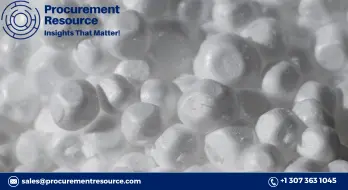Polystyrene Prices In The Asia Pacific And Europe Region Are Now Stabilized After A Continuous Decline In 2022
.webp)
The Asian PS Market Prices Witness Stability Again
Polystyrene is principally used in a wide range of applications, including in packaging and one-time use, electrical and electronic, consumer and institutional, resellers, building and construction, among others.
The prices have been stabilised in the region after a week of negligible rising; however, SEA (Southeast Asia) GPPS (General Purpose polystyrenes) witnessed hike attempts driven by cost. Furthermore, Brent crude rose by 7% weak-on-weak, and styrene followed suit. There were few purchases for instantaneous needs, and market participants continued to display a holiday spirit.
Request Access For Regular Price Update of Polystyrene
The import of GPPS (General Purpose polystyrenes) (USD/ton) for China was between 1100-1420 | SEA (Southeast Asia) 1100-1420 CIF; the import of HIPS (High Impact polystyrene) (USD/ton) for China was between 1100-1500 | SEA (Southeast Asia) 1100-1560.
During January 2023 the regional prices of the commodities were as follows:
- Local spot (€/ton): HIPS 1950-2250 FD (Western Europe)
- Local spot (€/ton): HIPS 1950-2350 FD (Italy)
- Import S. Korea (S/ton): HIPS 1330-1770 CIF (Turkey)
- Europe (C/ton): - HIPS 1450-1500 CIF (Turkey)
- Local (S/ton) inc. VAT: HIPS 2180-2370 (Turkey)
- Import ($/ton): HIPS 1750-1880 CIF (Egypt)
- Import (S/ton): HIPS 1470-1615 CIF (China)
- Import ($/ton): HIPS 1470-1590 CIF (Indonesia)
The Global Polystyrene Industry Outlook
The Polystyrene demand is anticipated to advance on the back of the construction and electronics industry.
The Asia Pacific region is a significant market for polystyrene. Presently, it is majorly contributing to the material's total trade market. Although the export and import of general-purpose polystyrene (GPPS) and high-impact polystyrene (HIPS) are stable in the region, the Asia Pacific is a net expanded polystyrene (EPS) resin, exporter.
North American consumers are anticipated to depend on the Asia Pacific region for catering for their future requirements. China is among the biggest HIPS and GPPS importers due to the growing application of the substance in the consumer electronics sector.
The EPS market is aided by the strong demand from the market in Asia, which is likely to expand further in the approaching years. In contrast, mature markets such as North America and Europe are anticipated to develop gradually compared to Asia.
The United States is among the net importers of general-purpose polystyrene (GPPS), high-impact polystyrene (HIPS), and expanded polystyrene (EPS). Due to the tumefying demand for expanded polystyrene, Europe may rely on imports from areas such as India and Korea.
Within Europe, Turkey is the biggest export market comprising almost half of Europe's total exports. The extended polystyrene industry was one of the most rapidly developing markets for polystyrene due to the increased demand from the construction industry.
The sector is primarily influenced by the construction industry, which is expanding at a fast rate. The Asia Pacific construction industry will likely evolve quicker than North America and Europe, thereby propelling the polystyrene demand from the sector.
Price Analysis of the Commodity
North America
The recent prices of Polystyrene varied recently because of the changing prices of crude and feedstock Styrene. There were fluctuations in price within the last few months, where prices increased and decreased. In addition, the low temperatures during December, along with the festive season, lowered the quantity of Polystyrene produced in the US.
The purchasing activity in the downstream industry lowered proportionately, which impacted the final prices of the commodity. There was a downward pressure in the US Polystyrene price realization because of the reduced comparative freight rates between the markets in US and Asia.
APAC
The Asia Pacific region witnessed a stable decrease in the price of Polystyrene due to the declining feedstock Styrene prices. The commodity's price lowered relatively because of stiff production costs and frail demand from the downstream industries.
Read More About Polystyrene Production Cost Reports - REQUEST FREE SAMPLE COPY IN PDF
Owing to the COVID constraints and frail demand in the local market in China, the Chinese market stayed quiet. In addition, the latest months witnessed a series of lowering upstream costs that allowed firms to ramp up production and stock, leading to enough supplies in the region.
Europe
The European Polystyrene market showed a frail market sentiment all through the last few months due to the changing prices of upstream crude oil in the market in Europe. Amidst the global fluxes in the worldwide crude oil value, the demand for Polystyrene stays low.
But there was some stability in the rates of inflation in Europe, and the Polystyrene price persisted in lowering. The downstream derivatives like SBR, Expanded Polystyrene, and SAN followed a likewise price trend in order with the low Polystyrene prices. In addition, traders reduced their deals to hold a balance between demand and supply.
According to Procurement Resource, the article states that prices of Polystyrene in the Asia Pacific and Europe region are finally witnessing stability after a long term of price instability and declines. The demand has been driven by the extensive employment of the commodity in the construction and electronics industry.


